699 Search Results for communication book
May 17, 2013
by Robin Parker -
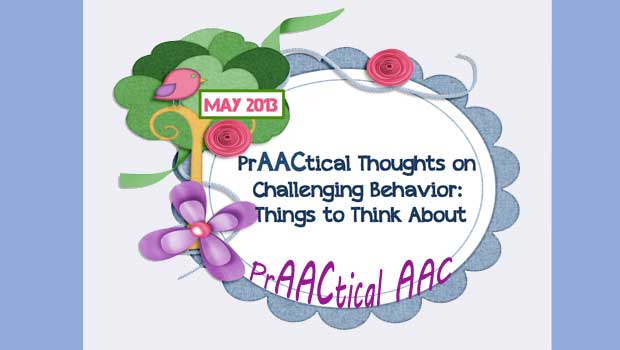
We have had several experiences in the last couple of weeks relating to concerns from SLP’s and educators about challenging behavior (dare we say it might be less structure, less predictability, less routines, or just plain tiredness because it is the end of the school year). Challenging behavior is hard… and disconcerting especially if you feel that you have little control over it (imagine how the learner feels- almost no one wants to be unhappy and out of control). However, there are so many strategies and supports that can improve the situation. It is often about getting back to basics (especially if end of the year issues play into the challenging behavior). The First 5 Questions to Ask: How Does the Learner Communicate? It is important that everyone has a way to communicate their own wants, needs, ideas, interests, and more. It is NOT good enough to just ‘know’ what someone... [Read More...]
May 13, 2013
by Carole Zangari -
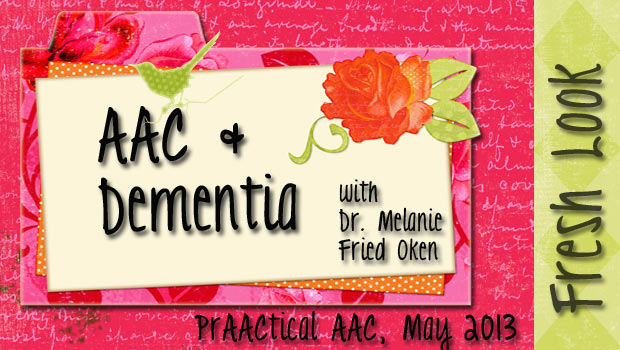
We’re thrilled to continue our Fresh Look series in celebration of Better Hearing and Speech Month (#BHSM). In this post, Dr. Melanie Fried Oken, from the Oregon Health and Science University, talks about some AAC strategies for people with dementia. I was captivated by her 2012 presentation on this topic at ISAAC 2012, and knew it was important to be able to share some of you work with you. We have much to offer these individuals with dementia, and Melanie’s post and linked resources are a great way to get started. ::::::::::::::::::::::::::::::::::::::::::::::::: Hey, what about us AAC providers who work with adults? We love reading PrAACtical AAC and can often adjust the tips, equipment recommendations, and strategies to meet our population needs. So when Carole gave me an opportunity to blog about AAC for adults with dementia, I grabbed the chance. I’d like to share with you some facts about... [Read More...]
May 10, 2013
by Robin Parker -
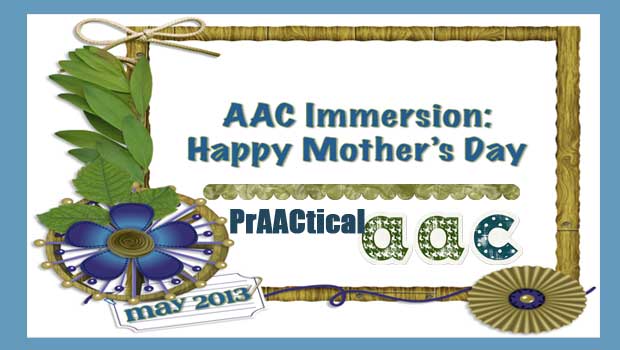
We were just having some in-depth conversations about AAC and making a difference. AAC intervention needs to be part of more than speech-language therapy. It needs to be a way of life, a communication and language interaction style, and fully immersed into all interactions. There are some Mom’s who make this happen. We have written about some of them in Getting From Here to There . But there are more (many more) and for awhile now some have been blogging about their AAC & visual language adventures. Here are just a 5 awesome posts from moms who share AAC rationales and meaningful AAC & language experiences. Learn from the best. Beach Trip (And AAC on the Road) by Dana Nieder– Uncommon Sense Halloween & AAC by Deanne Shoyer – Small But Kinda Mighty Her Eyes Shows She Knows by Catriona– Living With Rett Syndrome An Open Letter to the Parent of a Child with Speech... [Read More...]
May 8, 2013
by Robin Parker -
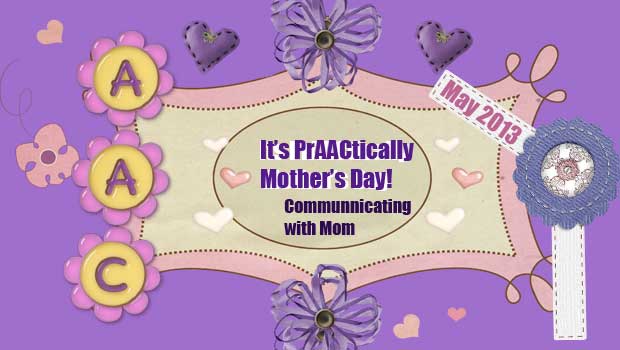
It’s PrAACtically Mother’s Day and we are thinking about gifts and activities that promote communication, language, & literacy. Here are 5 activities that are fun and interesting to plan for and do interactively. In the end, there will also be a tangible and/or intangible gift for mom. Enjoy and please share any additional activities that you have done or seen that you think are great. Visual Supports to Support Conversations with Moms-Thanks so much to Joel Shaul at Autism Teaching Strategies for creating this great visual support that helps support meaningful conversations with mom. Saying I Love You On Mother’s Day– Ideas for teaching communication of “I Love You” for beginning communicator. Mother’s Day Word List– Ideas for using this Mother’s Day Word Bank to create a poem, story, or more.. Words, words, and more words for conversation about mom. Your Special Chef– Use this picture recipe and lesson plan... [Read More...]
April 29, 2013
by Carole Zangari -
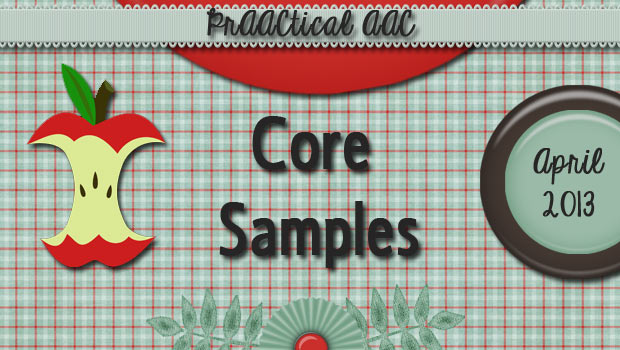
Whether we’re working on a project, cooking with new ingredients, or doing something crafty, one of the things we find most helpful is examples. Seeing how other people have approached a situation can be informative and inspiring. Making communication displays for people who use AAC is no different. Most of us appreciate the opportunity to see what our colleagues have done. We provided a number of examples of communication boards and books that are rich in core language in some of our earlier posts. Here are some of them, just in case you missed those posts. Kate Ahern’s Core Vocabulary in 3 Symbol Types (and Core Word Learning Book) via SlideShare Core language board with 20 PCS and 12 PCS by Yvonne Green via SET-BC PCS communication book (core and fringe) from the AT4All Wiki/Barbara Cannon PCS communication book pages in Boardmaker and PDF format by Polk County Public Schools... [Read More...]
April 20, 2013
by Carole Zangari -
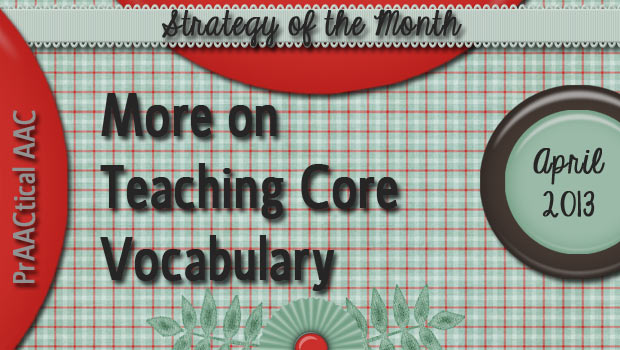
Last week, we talked about two key strategies for teaching core language: using aided language input and creating frequent opportunities to teach and elicit core words. In today’s post, we’ll expand the number of words and discuss two additional considerations for teaching core words. Aided language input is always important in working with beginning users of AAC. It exposes them to their new means of communication, provides them with a competent model of their AAC system, and introduces them to words and symbols they don’t yet know within a meaningful context. It also forces us to slow down when talking, something that can be very beneficial when you consider that many beginning users of AAC also have difficulty processing oral language. (It may take them longer to decode what they’re hearing and they may have to concentrate more than the average kid.) If you’ve actually tried pointing to symbols as... [Read More...]
April 8, 2013
by Carole Zangari -
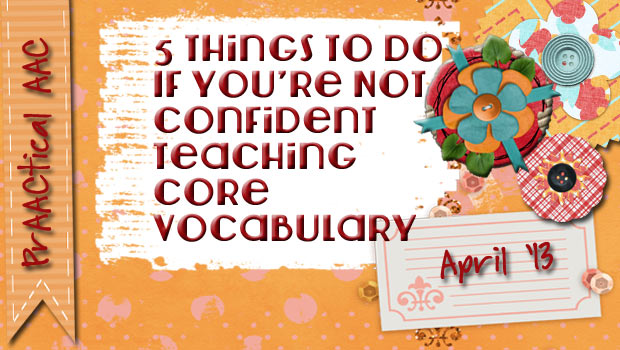
New to teaching core vocabulary in AAC? On board with the concept? Know that it’s important but find it a little intimidating to teach? Welcome to the club! Actually, it’s quite a big club but you wouldn’t know it because lots of members are still closeted. That’s okay – no one here is going to ‘out’ you. But if you want to move forward in your AAC teaching journey, here are some things to try. Breathe and forgive yourself: It’s easy to feel like everyone else knows this but you. Not true. We tend to beat ourselves up for not being out ahead of the curve, but you know what? It’s not worth it. We’re all a work in progress, so let it go and just start where you are. As one of our favorite eminent scholars** has repeatedly said, “When you know better, you do better.” Get your own... [Read More...]
March 7, 2013
by Carole Zangari -
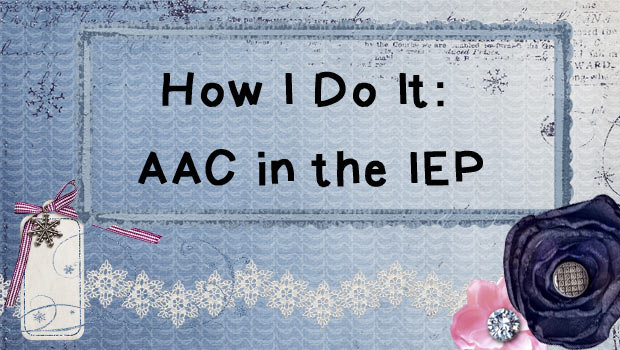
We’re happy to welcome back, Lauren Enders, an AAC specialist from Pennsylvania. You can read her earlier post here. This month, Lauren shares some of ways she addresses AAC learning in the IEP. Frequently, SLPs and teachers contact me in a complete panic because they need to generate an IEP and write IEP goals for a student who is using (or beginning to use) Augmentative and Alternative Communication (AAC). These folks have lots of questions and most often, have no idea where to begin. There are a number of questions that come up repeatedly in these panicked requests. When approached by PrAACtical AAC to write a post about IEPs and AAC, I thought it might be helpful to share some of the most common questions I hear along with the answers I provide. I will structure the post in a Question & Answer format in the hopes that the post... [Read More...]
March 2, 2013
by Carole Zangari -
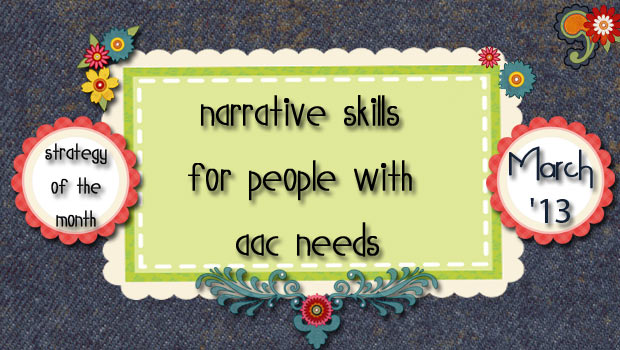
This month, we’ll share some thoughts about helping people with AAC needs develop narrative skills. Why narrative skills? Because they help us connect to one another and communication learning works best when we feel connected. Among other things, storytelling helps us relate to one another. Narrative language is important for reading and writing skills to develop. It helps us understand the world and ourselves. In telling our stories, we establish our identities. Plus, it’s part of what makes life fun. In the US, pediatric therapists are having lots of conversations about the Common Core State Standards (CCSS) in English Language Arts (ELA), and how they relate to the IEP goals of the students that they serve. Many of the goals in the ELA speaking domain require students to be able to summarize what they hear and read, so it is no surprise that SLPs are prioritizing narrative language and related... [Read More...]
February 21, 2013
by Carole Zangari -
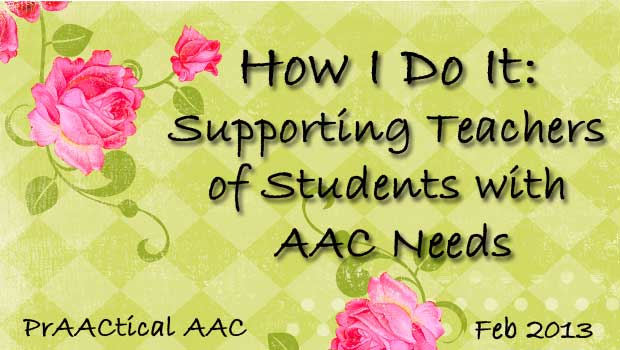
We couldn’t be happier to have a guest post by Jane Farrall for our How I Do It series. Jane has worked as a school and adult service based speech pathologist and literacy teacher. She has also worked as an assistive technology specialist and is currently working as an independent consultant in literacy, AAC and Assistive Technology. Jane has been working in the disability and assistive technology field for over 20 years. She has extensive practical experience in both AAC and in teaching children and adults with disabilities to acquire literacy. She has completed a Masters in Special Education focusing on literacy acquisition in children and adults without speech. Jane is a former Chairperson of AGOSCI (Australian Group on Severe Communication Impairment) and is the founder and organiser of the Big Mouth Camp, a camp for school aged students using speech generating devices and their families. You can get more... [Read More...]









